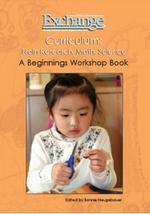You must first have a lot of patience to learn to have patience.
-Stanislaw J. Lec
Susan Levine, Ph.D., from the University of Chicago, offered these insights on spatial thinking in preschoolers on the LearnNow website:
"As studies mount that spatial thinking can actually be enhanced by specific activities at the pre-K level, what can we say about methods that actually work? Our latest published work honed in on the dynamics of puzzle play with children as they migrated from ages 2 to 4.5. We tracked 53 pairs of kids and their primary caregivers (mostly mothers), at multiple intervals for 90 minutes per visit, recording the encounters on video.
"One of the strongest take-home messages from our study is that richer engagement with puzzle play at 2 produced a stronger grasp of STEM-centric concepts at 4.5. Specifically, the children who showed the most engagement with puzzle play at 2 stayed on their trajectory throughout our study period. Moreover, the strong puzzlers, when tested at age 4.5, performed well above their age peers in one of the gold standard tests for spatial skills — the ability to mentally rotate an object.
"So what’s the link between puzzle and spatial? Mastering the placement of puzzle pieces inherently compels the mind — young or old — to recognize shapes and patterns in certain objects and then to imagine how they might fit into the larger whole. More often than not, the skilled players must rotate the piece in their minds to conceive of its place, and then must test their hypothesis by actually trying to place it where they believe it to belong."
 All Beginnings Workshop Book are 40% off for 24 hours! The Beginnings Workshop Book Curriculum: Brain Research, Math, Science contains the following insightful articles:
All Beginnings Workshop Book are 40% off for 24 hours! The Beginnings Workshop Book Curriculum: Brain Research, Math, Science contains the following insightful articles:
APPLYING BRAIN RESEARCH
- Primed for Learning: The Young Child’s Mind
- Turning Knowledge Into Practice
- Is Your Program Brain Compatible?
- Using Early Childhood Brain Development Research
MATH AND NUMBERS — I
- The History of Mancala in the Garden Room
- Music and Math: How Do We Make the Connection for Preschoolers?
- Line Printing: A Process for Exploring Mathematical Concepts
- After-School Fun With Math: Collections, Sorting, and Graphing Games
MATH AND NUMBERS — II
- Math Talk With Young Children: One Parent’s Experience
- How Children Build Their Understanding of Numbers
- Early Math: It’s More Than Numbers
- Assessing Mathematical Learning: Observing and Listening to Children
- Encouraging Rich Mathematical Experiences at Home
SCIENCE, USING THE OUTDOORS
- Summertime Science for School-Agers: Just for Fun?
- Nurturing Environmental Awareness in Children
- Sharing Nature With Children
- The Adventure Outside Your Classroom Door
- Environmental Education As a Teaching Tool
YOUNG CHILDREN AND TECHNOLOGY
- Computers for Infants and Young Children
- Using Technology to Enhance Early Learning Experiences
- Creative Use of Technology With School-Agers
- Evaluating and Selecting Software for Children
View All Titles and Purchase
 << Previous Issue
| View Past Issues | | Next Issue >>
<< Previous Issue
| View Past Issues | | Next Issue >>  All Beginnings Workshop Book are 40% off for 24 hours! The Beginnings Workshop Book Curriculum: Brain Research, Math, Science contains the following insightful articles:
All Beginnings Workshop Book are 40% off for 24 hours! The Beginnings Workshop Book Curriculum: Brain Research, Math, Science contains the following insightful articles:
Comments (2)
Displaying All 2 CommentsCSBC
Denver, United States
First, i wonder if the results are a function of a puzzle-rich environment, or of mothers who see the value of letting their children explore and manipulate real objects as opposed to watching TV and using.computers. Secondly, I am not sure why this matters, since our schools today do not want children to be spatial thinkers; they want them to be only verbal and mathematical thinkers.Until the early childhood field starts to aggressively insist that K-12 schools support all eight of Gardner's intelligences, this kind of research doe not really make much sense.
ece consultant
Dallas, TX, United States
*A material-rich embedded classroom, with examples of different skill-level puzzles, will facilitate a child's learning, to start with. Children need choices, and time to pursue those choices, either at work/playtime or in a small-group setting, to develop confidence. Giving children a variety of puzzles to choose from, will show the adult where the child's skill-level is at, and that info is helpful for planning for the next day's activities. The 'whole child' learns at his/her own pace, and being intrinsically motivated 'to choose', as opposed 'being told what to do, makes all the difference.
Post a Comment